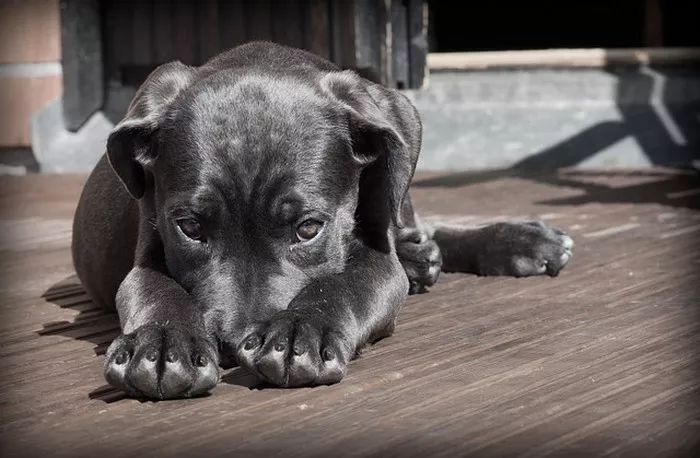Ben Leonberg’s horror film Good Boy has made waves in the indie scene, especially after its debut at SXSW, with its unusual lead—his own dog, Indy. The film follows Indy, a brown and white retriever, who must protect his ailing owner from a malevolent supernatural entity. The heartwarming sight of the lovable dog drew initial coos from audiences, but as the tension escalates, reactions quickly turn to horror.
Leonberg remembers early screenings, noting, “As soon as the movie begins with Indy peacefully sleeping, there’s a collective ‘Aw.’ But as the tension builds, the reactions shift. At one recent screening, someone looked at me and said, ‘How could you?!’”
Shot over three years in a secluded New Jersey home, Good Boy takes inspiration from a well-known horror trope: a dog that senses impending danger before its human companions do. Following its successful SXSW premiere, the film received praise for its innovative perspective and chilling suspense, with Indy’s starring role generating much of the excitement.
Ahead of the film’s screening at the Calgary Underground Film Festival, Leonberg sat down with Variety to discuss the film’s conception, the challenges of directing a dog, and his three-year journey to bring Good Boy to life.
The Dog-Centered Pitch: A Creative Gamble
When Leonberg pitched the idea of a horror film featuring a dog as the protagonist, the reaction was divided. Creatively, the idea was compelling. “Everyone loves the classic trope of a dog sensing something wrong in the house,” Leonberg explains. But the practicality of filming from a dog’s point of view seemed daunting. “I might be a little crazy for thinking I could pull this off,” he admits. “But that’s also what makes the film unique.”
The film’s origin was a proof-of-concept short made for The Rode Reel, an online short film contest. After winning the Judges’ Film Prize, Indy earned a nomination for Best Actor, cementing his role as the film’s star. Leonberg confesses, “At first, I didn’t intend to make the feature with Indy, but people’s reactions to him were so strong that it became clear he had to be the leading man.”
A Unique POV: The Power of the Dog’s Perspective
Leonberg believes the POV of a dog is highly effective for horror. “People connect with animals instinctively,” he notes. “When you start with a cute dog, the audience immediately cares about him. From there, the stakes of his actions—whether he’s seeing something disturbing or reacting to danger—become deeply engaging.” The subjective yet objective nature of the dog’s perspective allows the audience to fill in the gaps, creating tension without revealing too much.
Indy as the Lead: Why Not Another Dog?
When asked if he considered casting a different dog, Leonberg points out Indy’s unique qualities. “Indy has this intense, unblinking stare,” he says. “That stare, combined with his natural performance ability, created the perfect tool for storytelling. It’s like the audience does the work, interpreting what Indy is looking at.” Working with his own dog also brought a level of authenticity to the film. “There are moments in the movie that only Indy, because he’s my dog, would do,” says Leonberg, explaining that their familial bond made certain scenes feel genuine and intimate.
The Long Road to Production
Unlike typical films with trained dog actors, Good Boy was shot over an extended period with only Indy in the lead role. “We didn’t have multiple dogs to swap in for long shooting days,” Leonberg shares. “This meant we had to adapt our shooting schedule to his needs. The film became more like a documentary, capturing real moments of Indy’s life.” The location—a quaint house in the woods of New Jersey—was also integral to the film’s atmosphere, helping create a sense of isolation and unease. “My wife, who produced the film, was incredibly supportive, living in the ‘haunted’ house with me for three years while we made the movie,” he laughs.
Managing a Dog Actor: Challenges on Set
Directing Indy was a challenge in itself. “You can’t just tell a dog to hit a specific mark like you would a human actor,” Leonberg explains. “Instead, we set up the environment and let Indy’s natural behavior drive the scene.” Leonberg uses an example from early in the film when Indy reacts to an empty corner—a seemingly simple but crucial moment in the story. “I’d give him a command he didn’t know, and his reaction—like the famous dog head tilt—became an unforgettable moment, even though it wasn’t something we could script.”
Human-Animal Bond: The Heart of the Film
Ultimately, Good Boy is about the deep emotional connection between humans and animals. The bond between Indy and his character, Todd, underscores a fundamental truth about love and loyalty. “The movie explores what happens when an unstoppable supernatural force faces a dog who will do anything to protect his owner,” Leonberg says. “Animals, particularly dogs, have always been protectors, and this story highlights how they play a vital role in our lives, offering comfort and companionship during times of crisis.”
As Good Boy continues to generate buzz, it stands out not only for its horror elements but also for the special, authentic bond it portrays between man and dog.

